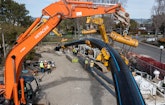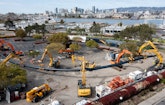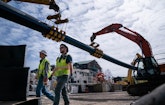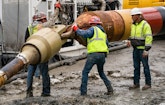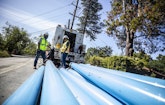
The 3,300-foot-long pipe, resting on more than 100 pipe rollers, was pulled from Alameda to Oakland at a rate of between 3 to 4 feet per minute. The pipe weighed about 228,500 tons.
Photography by David Elkins
To protect the city of Alameda’s water supply from potentially crippling damage during an earthquake, the East Bay Municipal Utility District recently completed a highly complex project: replacing a vulnerable underwater, cast-iron water main with a 3,300-foot-long, high-density...

